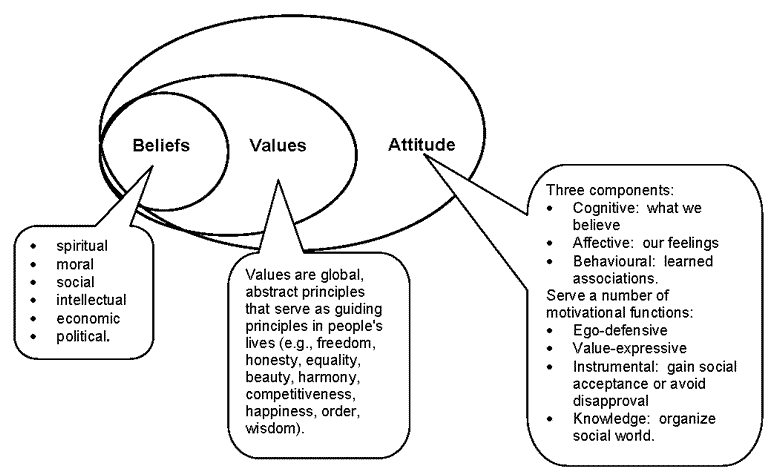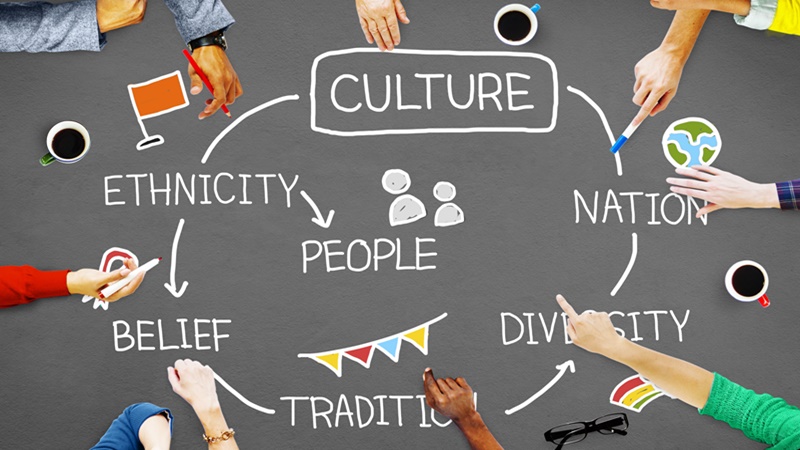“What you are speaks so loudly, I can’t hear what you say.”
Understanding Culture
Culture is a collection of mindsets, standards or models that tell us who we are and how we should behave. For each area of our lives our culture provides “a set of rules and regulations” that:
- Define boundaries, and
- Say what we must do to succeed within those boundaries.
Success is measured by the problems you solve using these rules and regulations. Our culture shapes our world and our world shapes our culture. Practically speaking, culture makes the world we live and work in our reality.
Culture acts as a filter. What may be perfectly obvious to persons with a particular paradigm, may be quite invisible to persons with a different paradigm. Our ethnocentrism naively assumes that others are just like us, or should be, or at least they should understand our position. If not, they have a problem, they are to be blamed.
Click here to view a video on diversity perspective.
Cultural Programming
Where did you learn your values, beliefs, attitudes and patterns of thinking and acting? Everyone is born into a culture. Our beliefs begin with those of our family, but they continue to be shaped by all our experiences after birth. For the most part, family attitudes, beliefs, languages, and other behaviours are accepted without question.
Cultural Filters
Because we are different we see and interpret behaviour through our cultural filter. One effect of cultural programming is that it puts us “on automatic”. When we were children learning about the world, some of the messages we received about people who are different from us were misinformation. Some of these messages came from our parents, friends, teachers and others.
These people did not intend to feed us misinformation. They were simply passing on the messages that had been passed down to them. Some of the messages we received came from people. Some came from media, such as television and textbooks and newspapers.
Some of the misinformation constituted stereotypes. These stereotypes became mental types that affected what we thought and how we felt about people who were different from ourselves. Those types also affected how we responded to people who were different from us. The responses came automatic.
What is a stereotype? To understand stereotypes, we need to explore the following three related concepts:
- Stereotype is a mental process/thought that certain type people are the same in some behaviour. Often, stereotypes are misconceptions that has not been properly thought through or investigated. In other words, they are not necessarily truths.
- Prejudice is a judgement/belief about a group that is often not true. As stereotypes, they are often based on assumptions that have not been researched.
- Discrimination is the action we take because of our stereotypes and or prejudice. Because stereotypes and prejudice are mostly based on untruths, the discrimination based on them is often unfair and ungrounded.
The workforce is changing and becoming more diverse. With this change, managers in organisations had to address issues about employee attitudes on diversity issues such as race, religion, sexual orientation and age.

Attitudes are evaluative statements, either favourable or unfavourable, concerning objects, people or events. They are not the same as values.
Your values form the core of your humanity. Most people never think about this and they find it hard to determine the values that guide their lives. Values guide us in what we want to achieve or have. They are learnt early in life and may be transferred from generation to generation. They are often so embedded that they cannot be changed without effort. However, values can be changed, and you may exchange them for values that hold more positive feelings for you.
To be a responsible citizen of a country, an organisation, and your family, it is your responsibility to:
- Determine the values that guide your life.
- Evaluate them in terms of the consequences they have for you and the people around you.
- Decide which values you want to change and which you want to leave as is.
Beliefs can be described as the “truths” that you construct about how life should work/not work. These beliefs have been formed over years and you tend to be deeply convinced about the beliefs that you hold about life. Beliefs are imbedded in the sub-conscious and conscious minds and you may or may not be able to identify these easily.
Your values and beliefs strongly influence your attitude. Our beliefs are decisive in how we think and make choices in life. It is therefore important to deal with people’s beliefs to understand their behaviour.
Everyone must identify which perceptions they are willing to change. If they are not willing to change some perceptions, they must identify the value which lies at the root of the perception and why it is difficult to change their attitude regarding that aspect.

Cultural Resistance
We often think of a racist as being the active bigot who tells racial jokes and engages in violent physical acts (these actions are an example of overt racism). The more subtle and covert acts of liberal, international of unintentional racism maintain a system of racial superiority. The following are some behaviours which fall in this category:
Invisibility: Ignoring. Failure to acknowledge another person who is not of the same race as you.
Colour Blind: “I don’t even think of you as another ethical group.” Assume that this is a compliment, and thus perpetuating the myth that it’s not “okay” to be another ethical group.
Dominance/Paternalism: Ease of another ethical group in taking charge. Difficulty with relating to different ethical group in positions of authority.
Defining the Other: Defining who/what typical person is and what their experience is/has been, without listening to them on these issues, i.e. making assumptions.
Denying Differences: Comfort of other racial groups accepting one another.
Assuming Things are Better: Failure to recognise that, although legal framework of racism has been largely done away with, subtle racism still exists within people, between communities and across differences.
Fear of Assertiveness: Hesitancy of people of different race groups to engage in confrontative dialogue. Fear of giving feedback on performance appraisals/assignments.
